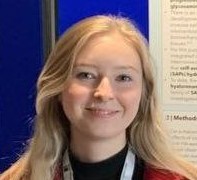About me
I moved to the UK from Estonia in 2018 to pursue a degree in Neuroscience at the University of Leeds. I secured my first Dean’s Vacation Research Scholarship (DVRS) at Leeds in 2020, but this one did not go ahead because of the lockdown. Same year I also secured the placement position of a research intern at the p53 Laboratory at the Agency for Science, Technology and Research (A*STAR) in Singapore, but due to the impact of the COVID-19 pandemic, the alternative long-distance format was implemented. My remote project focused on developing and optimising Python scripts for next-generation sequencing data analysis from phage display experiments. In 2022 I was again awarded DVRS, and (this one did actually go ahead!) spent 8 weeks working at the Institute of Medical and Biological Engineering in Leeds on an interdisciplinary project characterising self-assembling peptide and glycosaminoglycan hybrid hydrogels for regenerative medicine applications. The work on this project inspired me and firmed my decision to pursue an interdisciplinary PhD at the cross-roads of biology, physics and chemistry.
My Project
Glycocalyces comprise the outer layer of virtually all cells in our body and are rich in sugar polymers. They are known to have a vital, but not yet defined function in cell communication and macromolecular transport. They also act as a protective barrier against pathogens, yet some viruses and bacterial toxins have evolved various means to ‘hijack’ the glycocalyx. Before any biological entity (a virus or a signalling protein) can reach and interact with its designated cell surface receptor, it needs to diffuse through the glycocalyx. The biophysical and biochemical mechanisms that define this macromolecular transport are not well understood. I am hoping to establish a mechanistic understanding of how molecules diffuse within glycocalyces using a novel method to probe diffusion in molecular detail.
Connect
Twitter: https://twitter.com/pavljukme
LinkedIn: https://www.linkedin.com/in/jelizaveta-pavljuk-69771a196/

